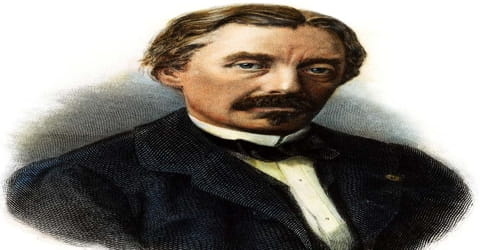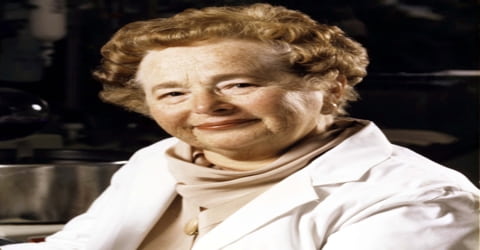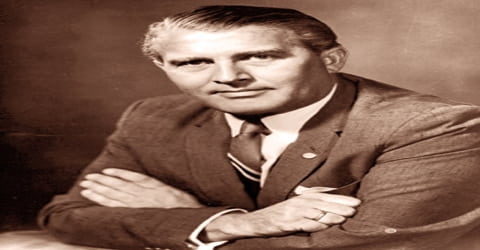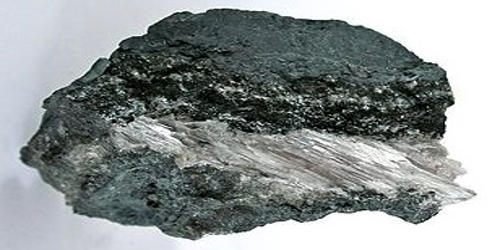Biography of Howard Martin Temin
Howard Martin Temin – American geneticist and virologist.
Name: Howard Martin Temin
Date of Birth: December 10, 1934
Place of Birth: Philadelphia, Pennsylvania, United State
Date of Death: February 9, 1994 (aged 59)
Place of Death: Madison, Wisconsin
Occupation: Geneticist, Virologist
Father: Henry Temin
Mother: Annette Lehman
Spouse/Ex: Rayla Greenberg (m. 1962)
Children: 2
Early Life

An American virologist who in 1975 shared the Nobel Prize for Physiology or Medicine with his former professor Renato Dulbecco and another of Dulbecco’s students, David Baltimore, for his co-discovery of the enzyme reverse transcriptase, Howard Martin Temin was born on December 10, 1934, in Philadelphia, Pennsylvania, to Jewish parents, Annette (Lehman), an activist, and Henry Temin, an attorney.
A medical researcher, Temin played a major role in discovering an enzyme that is used to generate complementary DNA (cDNA) from an RNA template, a process termed reverse transcription. His discoveries helped to gain an understanding of how some cancer cells operate and later played a crucial role in identifying the AIDS virus. Born to a mother who was active in educational affairs, he was academically inclined from a young age. During his high school years, he participated in a summer program at the Jackson Laboratory in Bar Harbor which kindled his interest in biological sciences. He published his first scientific paper at the age 18 and received his bachelor’s degree from Swarthmore College in 1955 majoring and minoring in biology in the honors program. After earning his doctorate from the California Institute of Technology he embarked on a career in research during the course of which he made key contributions to the study of cancer. He independently discovered reverse transcriptase which is one of the most important discoveries of the modern era of medicine. In an ironic twist of fate, the cancer researcher was himself diagnosed with the disease and succumbed to it at the age of 59.
Childhood, Family and Educational Life

An American geneticist and virologist, Howard Martin Temin was born in Philadelphia on December 10, 1934, to Jewish parents. His mother, Annette Lehman, was an activist who was often involved in educational affairs and his father, Henry Temin, was an attorney. Howard had two brothers. Temin’s interest in science became evident by the time he was fourteen years old; while a student at Central High School in Philadelphia, he spent summers doing research at the Jackson Laboratory in Bar Harbor, Maine. He also spent a summer at the Institute for Cancer Research in Philadelphia.
Temin’s parents raised their family to have values associated with social justice and independent thinking, which was evident throughout his life. For Temin’s bar mitzvah, the family donated money that would have been spent on the party, to a local camp for displaced persons. Temin was also the valedictorian of his class and he devoted his speech to relevant issues at the time including the recent hydrogen bomb activity and the news of sending a man to the moon.
Temin joined the Swarthmore College in 1951 and graduated in 1955 with a bachelor’s degree, majoring and minoring in biology in the honors program. He then proceeded to study experimental embryology at the California Institute of Technology in Pasadena. After several months he changed his major to animal virology, becoming a graduate student in the laboratory of Professor Renato Dulbecco. At the institute, Temin was greatly influenced by Professor Max Delbrück and by Dr. Matthew Meselson. Temin earned his Ph.D. degree in animal virology in 1959 and spent an additional year in Professor Dulbecco’s laboratory as a postdoctoral fellow.
Personal Life
Howard Martin Temin married Rayla Greenberg, a medical geneticist, on 27 May 1962, Brooklyn, New York, and had two children.
Temin was a non-smoker and a vocal crusader against cigarettes. Ironically he became ill with adenocarcinoma, a type of lung cancer that is not linked to smoking.
Career and Works
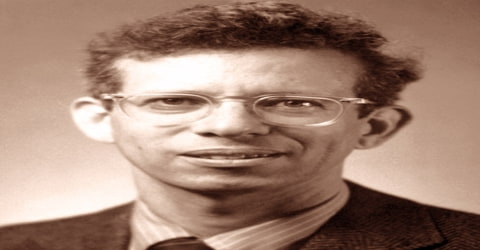
In 1960, the McArdle Laboratory for Cancer Research at the University of Wisconsin-Madison recruited Howard Martin Temin as a virologist; a position that had been hard to fill because, at the time, virology was not considered pertinent to cancer research. Even though Temin knew he would be completely independent in Madison, because of the lack of research involving virology and oncology together, Temin stated that he was “supremely self-confident”. When he first arrived in Madison in 1960, Temin found an unprepared laboratory in the basement of a rundown building with an office that could be considered a closet. Until a more suitable laboratory could be prepared, he continued his research with RSV at a friend’s laboratory at the University of Illinois. Later that year, he returned to Madison, continued his RSV research in his own lab, and began his position as an assistant professor.
His hypothesis was regarded with disdain because at that time biologists were certain that only RNA could be formed from a DNA template; the reverse (DNA formed from RNA) was not thought possible. It was only in 1970, when Temin and Doctor Satoshi Mizutani, as well as Doctor David Baltimore (in separate labs), identified an enzyme, “reverse transcriptase,” that synthesized DNA and used an RNA template, that Temin’s provirus hypothesis was accepted.
While working toward his Ph.D. under Dulbecco at the California Institute of Technology, Temin began investigating how the Rous sarcoma virus causes animal cancers. One puzzling observation was that the virus, the essential component of which is ribonucleic acid (RNA), could not infect the cell if the synthesis of deoxyribonucleic acid (DNA) was stopped. Temin proposed in 1964 that the virus somehow translated its RNA into DNA, which then redirected the reproductive activity of the cell, transforming it into a cancer cell. The cell would reproduce this DNA along with its own DNA, producing more cancer cells.
Using the antibiotic, actinomycin D, which inhibits the expression of DNA, Temin determined that the provirus was DNA or was located on the cell’s DNA., These results implied that the infecting Rous sarcoma virus was somehow generating complementary double-stranded DNA. Temin’s description of how tumor viruses act on the genetic material of the cell through reverse transcription was revolutionary. This upset the widely held belief at the time of a popularized version of the “Central Dogma” of molecular biology posited by Nobel laureate Francis Crick, one of the co-discoverers of the structure of DNA (along with James Watson and Rosalind Franklin). Crick had claimed only that sequence information cannot flow out of protein into DNA or RNA, but he was commonly interpreted as saying that information flows exclusively from DNA to RNA to protein. Many highly respected scientists disregarded his work and declared it impossible. Despite the lack of support from the scientific community, Temin continued to search for evidence to support his idea.
During the 1960s, Temin focused on studying the Rous sarcoma virus. His investigations on the control of multiplication of uninfected and Rous sarcoma virus-infected cells in culture led him to the discovery of reverse transcriptase (RT) the enzyme used to generate complementary DNA (cDNA) from an RNA template. Initially, his discovery was criticized by prominent scientists as the idea of RT contradicted the central dogma of molecular biology which states that DNA is transcribed into RNA which is then translated into proteins. At around the same time, another scientist, David Baltimore, independently isolated RT from two RNA tumor viruses and the concept of RT began to gain acceptance. For his discoveries, Temin won a share of the 1975 Nobel laureate in Physiology or Medicine. His elevated stature as an internationally respected scientist motivated him to become more active in the scientific community outside of research.
The discovery of reverse transcriptase is one of the most important of the modern era of medicine, as reverse transcriptase is the central enzyme in several widespread viral diseases such as AIDS and Hepatitis B. Reverse transcriptase is also an important component of several important techniques in molecular biology, such as the reverse transcription polymerase chain reaction, and diagnostic medicine. Following winning the Nobel Prize, Temin focused his research mainly on studying the viral sequences that control the packaging of viral RNA, developing a new vaccine for HIV, and studying the mechanisms of retroviral variation.
In 1979, Temin became an advisory member for the director of the National Institute of Health (NIH). The same year he also became a member of the human gene therapy subgroup of the recombinant DNA advisory committee. He was a fellow of the American Academy of Arts and Sciences and a member of the National Academy of Sciences as well.
Temin held a number of positions at the McArdle Laboratory until his death in 1994. He was associate professor (1964-1969); professor of oncology (1969-1994); Wisconsin Alumni Research Foundation Professor of Cancer Research (1971-1994); American Cancer Society Professor of Viral Oncology and Cell Biology (1974-1994); Harold P. Rusch Professor of Cancer Research (1980-1994); and Steenbock Professor of the Biological Sciences (1982-1994). Much of the work that Temin conducted on retroviruses became the germ of later research in developing vaccines and other preventive measures against both cancer and AIDS.
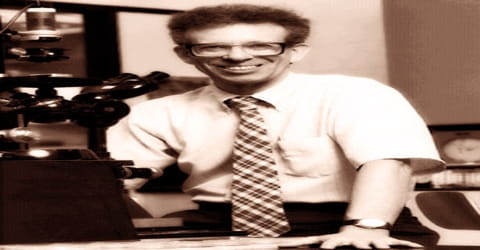
After winning the Nobel Prize, Temin also became more active in the scientific community outside of research. He was involved in over 14 scientific journals. In 1979, he became an advisory member for the director of the National Institute of Health (NIH) and a member of the human gene therapy subgroup of the recombinant DNA advisory committee. Temin was also a member of the National Cancer Advisory Board and the chairman of the AIDS subcommittee. At the National Institute of Allergy and Infectious Diseases (NIAID), he was the chairman of a genetic variation advisory panel on the development of AIDS and was a member of vaccine advisory board. In the National Academy of Sciences (NAS), he was a member of the Waksman Award committee and report review committee. In 1986, Temin became a member of the Institute of Medicine (IOM)/NAS committee for a national strategy for public policy issues associated with AIDS. The last committee Temin served on was the World Health Organization Advisory Council.
Awards and Honor
In 1972, Temin was given the NAS Award in Molecular Biology for his work leading to the discovery of reverse transcription.
Howard Martin Temin, David Baltimore, and Renato Dulbecco were jointly awarded the Nobel Prize in Physiology or Medicine in 1975 “for their discoveries concerning the interaction between tumor viruses and the genetic material of the cell.”
In 1981, Temin became a founding member of the World Cultural Council.
In 1992 Temin received the National Medal of Science. Temin was elected a Foreign Member of the Royal Society (ForMemRS) in 1988.
Death and Legacy
Howard Martin Temin taught and conducted research at UW-Madison until he died of lung cancer (despite being a non-smoker), on February 9, 1994. He was survived by his wife Rayla, a geneticist at UW-Madison, two daughters, and two brothers, Peter Temin, also an academic, and Michael Temin, a lawyer.
Temin independently discovered reverse transcriptase which is an enzyme used to generate complementary DNA (cDNA) from an RNA template through a process termed as reverse transcription. He initially faced much criticism for his idea of reverse transcription as it contradicted the central dogma of molecular biology. With time he gained recognition for this vital discovery which is today of tremendous significance to medical research.
Information Source:

